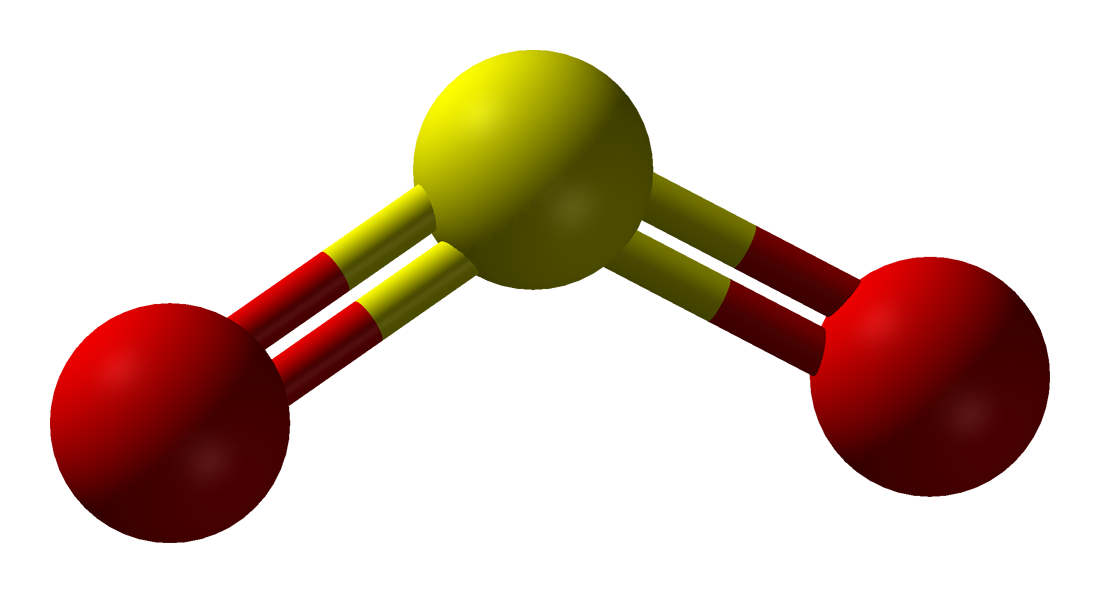Sulfur dioxide in Washington's air
We monitor air and track emissions from industrial sources to ensure sulfur dioxide levels meet health-based air quality standards.
A model of a sulfur dioxide molecule.
Sulfur dioxide
Sulfur dioxide (SO2) is a colorless gas with a strong smell. It gets into the air when fuel that contains sulfur is burned. Major sources in Washington are:
- Industrial facilities such as fossil fuel power plants, aluminum smelters, oil refineries, and pulp mills
- Ships and locomotives
EPA set National Ambient Air Quality Standards (NAAQS) for SO2, which specify levels of the pollutant in outdoor air that can impact public health, or harm the environment. There are two current NAAQS:
- 1-hour SO2 standard (health-based)
- 3-hour SO2 standard (welfare-based)
SO2 pollution in Washington
Thanks to improved pollution controls on industrial facilities and cleaner transportation fuels, Washington's SO2 levels have declined dramatically in recent decades.
Following EPA adoption of a new SO2 standard in 2010, Ecology evaluated SO2 ambient levels in all 39 counties in Washington and found that, except for a small area near an aluminum smelter in Whatcom County, the rest of Washington complies with the standard. To review our findings, please visit the Sulfur Dioxide Air Quality Designation web page.
Monitoring SO2 in the air
We monitor SO2 at six locations:
- One location in Seattle, representing urban conditions and trends.
- One location on the Olympic Peninsula representing rural background (or natural) conditions.
- One location in Anacortes, representing neighborhood conditions near an industrial region.
- Two locations near Alcoa Intalco Works near Ferndale in Whatcom County to evaluate the area’s compliance with the 2010 1-hour SO2 standard.
- One location near Alcoa Wenatchee LLC, close to Malaga in Chelan County and on the border of Douglas County, to evaluate the area’s compliance with the 2010 standard.
Health and environmental effects
SO2 irritates the respiratory system and causes inflammation and tightening of airways. Children, older adults, and people with asthma are at increased risk for health effects after SO2 exposure. Sulfate-containing particles can contribute to haze that reduces visibility.
Trees and plants can be harmed by sulfur dioxide in high concentrations. It can contribute to acid rain that harms sensitive ecosystems. When it reacts with fine particles in the air, it reduces visibility, causing a haze.
What you can do
There are some things you can do to protect yourself from SO2. You can:
- Limit outdoor activities during times of high air pollution.
- Close windows and vents during periods of high air pollution.
- Consult with your health care provider about a personal mask and air purification device.
Related links
Contact information
Anya Caudill
Environmental Planner
anya.caudill@ecy.wa.gov
360-791-5499


